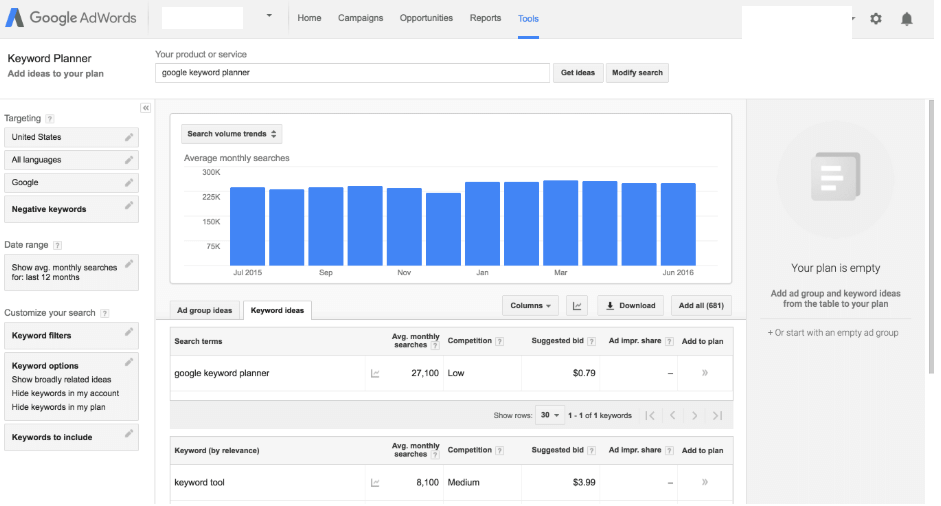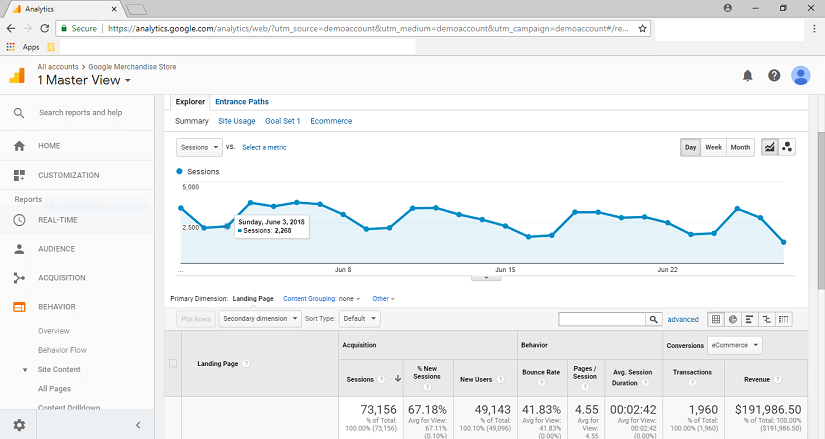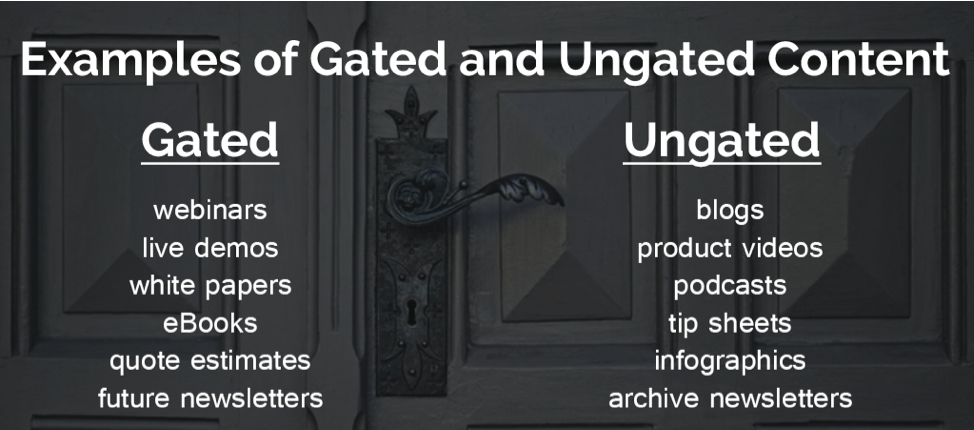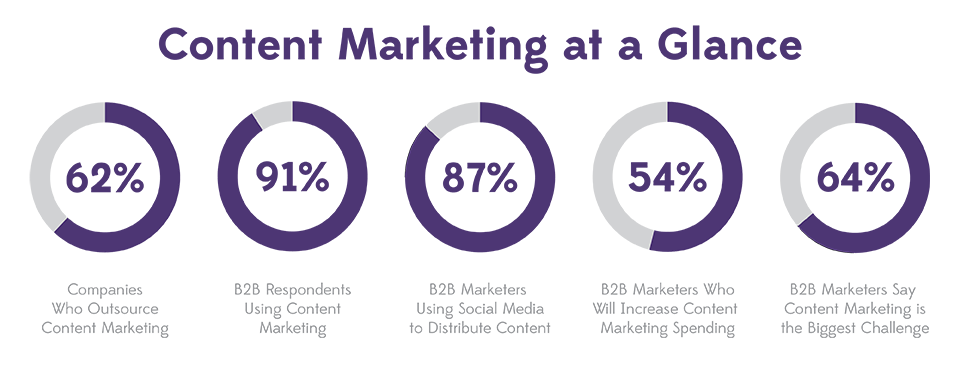B2B blogs have a terrible tendency to be dry, boring, and informal. Why are most B2B blogs so yawn-inducing?
Some of the blame lays at the feet of B2B business owners, who often become overly concerned about scaring customers away by showcasing personality. Then there’s the content-for-the-sake-of-content mentality that prevails in the industry, where many companies have been falsely told that if they publish blogs consistently, regardless of how aimless or poorly written the content is, they will increase their traffic.
This misguided mindset leads to a whole glut of boring content being published merely to feed the unending appetite of search engines, instead of to achieve the primary goal of content marketing—to educate and inform your existing and potential customers.
The blame game isn’t important but slapping some fun and excitement into your B2B content is. You want your blog content to be insightful and informative, but you also want to keep your readers from falling asleep on their keyboards while they read your stuff.
Watch On-demand: Check out this webinar to learn how you can implement content marketing into your strategy ➢
Here’s some tips for injecting some fun into your B2B blog.
Have a Voice
First and foremost, give your content a voice. What is voice in terms of writing? It’s the distinct personality, style, or point of view that a writing possesses. A strong authorial voice will leap off the screen and capture the attention of your reader.
I commonly hear people say that you can’t make boring topics fun, but it’s simply not true. By applying a unique voice to your writing, you can inject some life and character into any subject, regardless of how interesting or uninteresting you feel it may be.
For example, we can all agree that there is nothing inherently interesting about a person drinking a glass of water, right? To demonstrate the power of voice, here is two messages that have the same literal meaning, but vary greatly due to voice:
Boring Voice: Jill was thirsty, so she drank some water.

Fun Voice: Jill guzzled water straight from the faucet in a desperate attempt to quench her thirst.

Both sentences describe what is otherwise a boring event of someone drinking some water. The first one gives us a matter-as-fact account that leaves the reader with no questions or interest in learning more.
But in the second example the reader is left with several questions—why is she so thirsty? Why didn’t she use a glass? Why is she drinking yucky faucet water in a post-Brita world?
Deploy First Person
Another common contributor to boring content is third-person POV. Using third person is very standard in business writing, as it separates the person writing the content from the opinions being expressed in the writing. But while third person is safer, it creates distance between the writer and the reader, which often results in dull writing.
Don’t be scared to deploy first-person POV in your B2B content, especially in blogging. First person is more intimate, authentic, and confident than third person. By result, blogs written in the first person will sound more conversational and address the reader more directly.
If for no other reason, write in the first person because your audience is being inundated with third person. If they read five top-of-funnel blogs about a topic, and four of them are written in third person and one is in first, the first-person blog is going to have the inside edge on standing out.
Related Post: 5 Content Marketing Mistakes – That Give Competitors the Edge ➢
Take Some Chances
B2C brands simply have a more energetic and lively reputation than B2B, which makes it seem like B2C marketing is more fun-filled than B2B. Some of that is a consequence of the end product inherently being more interesting for B2C brands, after all when Don Draper and the copywriters of Sterling Cooper were devising scotch-soaked campaigns on the hit show Mad Men, they were doing so for massive B2C brands like Life Cereal, Kodak, and Chevrolet, not for finance & accounting firms or IT software suppliers.
But B2B brands don’t have to let B2C brands have all the fun. Instead, take note of their courage to try new things and apply that lesson to your content strategy.
Buck the status quo every once and while and take some chances with your content. While a B2B audience is typically a bit more conservative than a B2C one, that doesn’t mean you can’t throw in a pop culture reference every so often or toss some gifs into the equation. By taking some chances in how you write your blogs, you’re going to make the experience more fun to write, and possibly, you’ll identify that it will make your audience more engaged. But you won’t know until you try.
Writing the same boring B2B blogs over and over is no fun for you to write and certainly isn’t fun for your audience to read. Take note of some of the tips I put forth in this blog the next time to sit down to punch up a blog and see if you don’t stumble into a more intriguing blog.
Want to learn more about giving your B2B marketing a boost? Learn how Parqa can transform the way you approach digital marketing.
What would you do if you knew your website was working for you?




 If you don’t specialize in that area, it’s not likely your website has content around those keywords, so it’s not likely you are going to rank for that search at all. No chance of being found. (PS, we all know the importance of focusing on a niche industry and/or market is a whole different conversation.)
If you don’t specialize in that area, it’s not likely your website has content around those keywords, so it’s not likely you are going to rank for that search at all. No chance of being found. (PS, we all know the importance of focusing on a niche industry and/or market is a whole different conversation.)
 Make It Easy for Google to Find Your Blog
Make It Easy for Google to Find Your Blog





 You’re a smart, experienced individual who understands the value of marketing; you’ve put in the time to blog, post on social, send emails, and help your team become thought leaders, yet your digital marketing efforts aren’t moving the dial. So why aren’t you getting the results you had been promised by digital marketing? The reality is that without a solid strategy in place, digital marketing becomes mere trial and error. You can’t reap the benefits of digital marketing by aimlessly churning out content without a solid strategy. To benefit from content and get results, you have to do it right; otherwise it can work against you and give your competitors the edge.
You’re a smart, experienced individual who understands the value of marketing; you’ve put in the time to blog, post on social, send emails, and help your team become thought leaders, yet your digital marketing efforts aren’t moving the dial. So why aren’t you getting the results you had been promised by digital marketing? The reality is that without a solid strategy in place, digital marketing becomes mere trial and error. You can’t reap the benefits of digital marketing by aimlessly churning out content without a solid strategy. To benefit from content and get results, you have to do it right; otherwise it can work against you and give your competitors the edge.




